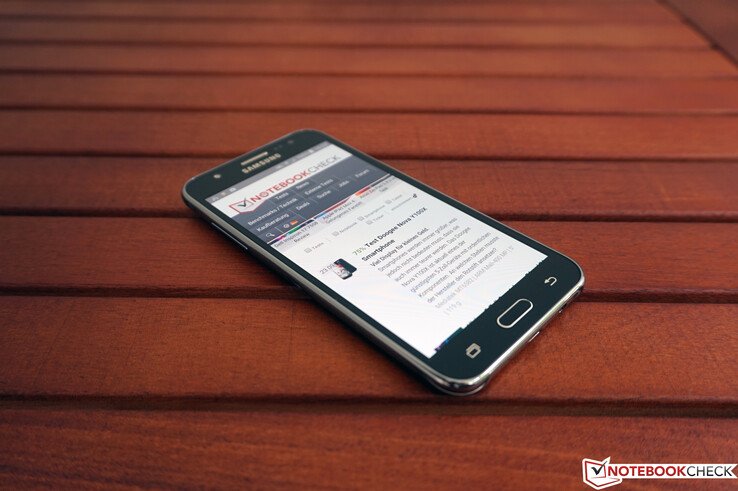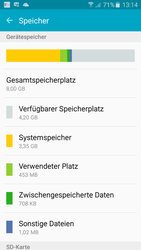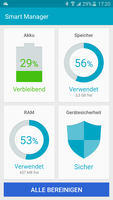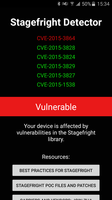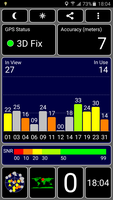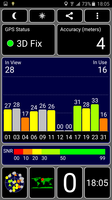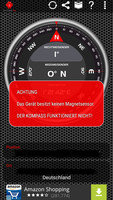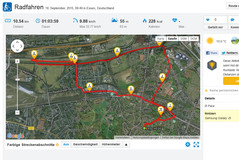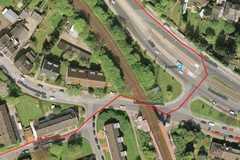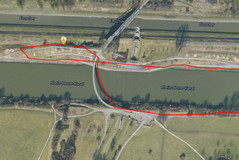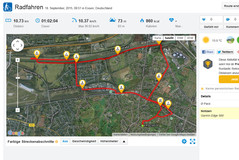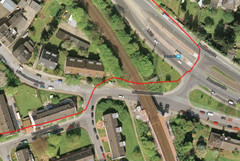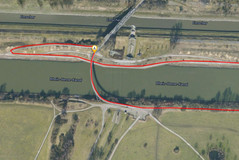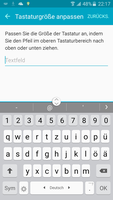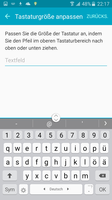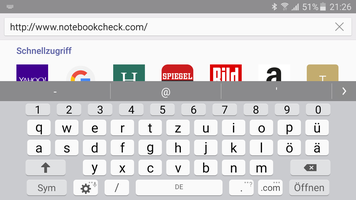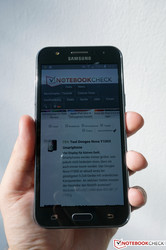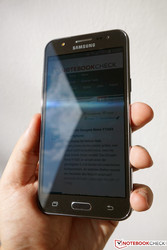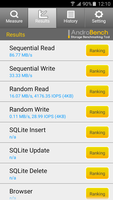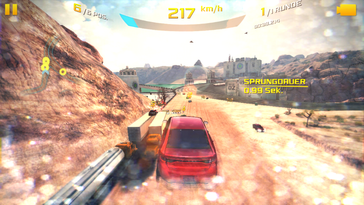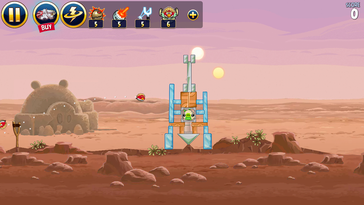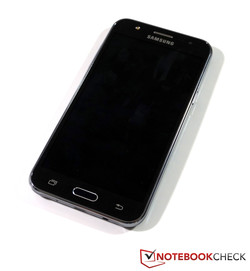Samsung Galaxy J5 Smartphone Review

For the original German review, see here.
After the Galaxy J1, Samsung has now launched another smartphone within its entry-level series, Galaxy J. The new Galaxy J5 is an inexpensive 5-inch smartphone that retails for an RRP of 219 Euros (~$249). One highlight of the smartphone is the additional LED flash at the front that is supposed to improve the selfie quality in low-light conditions. The other specifications of the device also leave a decent first impression. As well as a Super-AMOLED display with HD resolution, you get a quad-core SoC from Qualcomm with LTE support. According to Samsung, the Samsung Galaxy J5 is suitable for daily tasks. Within this review we aim to verify this statement.
There are many competitors in this price range. For example, possible comparison devices would be the current Motorola Moto G, the Huawei P8 Lite and the LG G4c. Other possible rivals are the Acer Liquid Jade Z, the ZTE Blade S6 as well as the Kazam Tornado 348. All models use very similar and sometimes even identical components, so we are curious to find out if the Galaxy J5 can stand out from the competition.
Case
As with the smaller Galaxy J1, Samsung uses the old polycarbonate chassis design for the Galaxy J5 with all its advantages and drawbacks. The advantages of the design are the detachable back cover of the smartphone, the replaceable battery and the microSD-slot to expand the storage capacity. The whole construction, except for the display, is made of plastics, so the overall impression is not very sophisticated.
However, there is no criticism for the stability and the build quality of the review unit. There is no creaking noise, and neither pressure nor twisting attempts are a problem for the smartphone. The buttons are also well integrated, only the volume rocker on the left side is slightly loose. The camera at the back is protruding slightly, but this is not a big deal in practice. Overall, the handling of the Galaxy J5 feels very solid and it is still comfortable to use with one hand. As well as the black color of our review unit, Samsung offers white and gold versions of the smartphone.
The dimensions of the Galaxy J5 are average within the comparison group (also see size comparison below).
Connectivity
The SoC of the Samsung Galaxy J5 is a familiar chip since Qualcomm’s Snapdragon 410 in combination with the Adreno 306 GPU is used by many inexpensive smartphones. The internal storage has a capacity of only 8 GB. You can use around 4.2 GB after the initial start, but only 3.3 GB after all the preloaded apps have been updated. These apps include the common Google offerings and third-party apps like Microsoft’s OneNote, for example. The storage capacity can be expanded via microSD-card (up to 128 GB) and many apps can be transferred to the additional storage, but there can still be problems, especially when you try to install large apps.
The USB 2.0 port does not support MHL for the media playback on suitable displays or TVs, but at least USB-OTG is supported. We had no problems to attach and use a USB flash drive with an appropriate adaptor. The Galaxy J5 also supports Wi-Fi-Direct and NFC for the wireless transfer of files.
Software
The Samsung Galaxy J5 uses Google’s Android operating system version 5.1.1 (Lollipop), but Samsung also installs its own user interface TouchWiz. In addition to the familiar Google apps, the manufacturer also preloads its own apps like "my Galaxy", the "S Planner" or the "Smart Manager". The latter offers a simple menu for basic battery settings, the memory status (including cleanup) and some security settings. There is also a simple mode that reduces the functionality of the home screen in favor of a simpler handling.
Other software additions include some Microsoft apps (OneDrive, OneNote) as well as various advertisement apps, but they can be removed. It is possible to use various themes that change the design and the color scheme if you want to customize your device.
Communication & GPS
The Samsung Galaxy J5 supports quad-band GSM, quad-band UMTS (up to 42 Mbps downstream) as well as LTE Cat. 4 (up to 150 Mbps downstream). You have to remove the back cover and the battery to access the SIM-card slot (Micro-SIM). We did not have any signal issues in the metropolitan T-Mobile network. The Wi-Fi module of our review unit only supports the standard 802.11 b/g/n in 2.4 GHz networks, but we did not encounter any issues in an apartment building with several wireless networks. Bluetooth 4.1 is also available.
The Samsung Galaxy J5 can locate its position via GPS, GLONASS and BeiDou. The review unit leaves a good impression, since the satellite connection is established within a few seconds, both outdoors and indoors (close to a window).
We checked the accuracy of the GPS module on a bicycle ride and compared the results with the professional navigation device Garmin Edge 500. Once again, the overall performance is good, because the complete track length is just 200 meters (~656 ft) shorter on the smartphone. The latter is even more precise in some sections (see crossing), but does not locate the position as often, which can result in shortcuts, especially in narrow sections. One factor that could still limit the navigation in the car or on a bicycle is the lack of a magnet sensor, so you cannot use a compass app.
Telephone & Voice Quality
The phone app is the familiar standard application that should not cause any problems for the user. In addition to call history, you get direct access to the favorites and contacts.
The voice quality left a mixed impression during our review. On the positive side was the stability of the calls, because we never encountered any dropouts. However, although generally voices were slightly distorted and dull on both sides of the call., the understandability was not affected.
The integrated hands-free function cannot impress us. The distance between the device and the user must not be too big, otherwise the voice will not be loud enough. The speaker at the back also tends to distort quickly. Depending on the position of the smartphone, you can also easily cover the speaker, which affects the quality even further. The provided headset does its job, but has problems when the ambient noises get too loud.
Cameras & Multimedia
The camera of the Galaxy J5 can be activated quickly with a double click on the home button, which also works when the smartphone is locked. The picture will be automatically stored on the memory card when a microSD-card is inserted. You can use the volume rocker as a trigger, which usually works quite fast, but the autofocus sometimes needs an additional second to focus the scene. Finally, it is possible to trigger pictures with a hand gesture and it worked well during our review.
Samsung uses a 5 MP camera at the front that can take FHD videos (1920x1080 pixels, 30 fps). The quality of the pictures is okay, but the sharpness cannot really impress us, even under good lighting conditions. Nevertheless, the results are sufficient for social networks.
According to Samsung the flash on the front to improve selfies in low-light situations. However, it is not really a traditional flash, but a photo light that illuminates the scene constantly. This works pretty well at short distance and the result is brighter, but the additional light is not powerful enough for longer distances.
At the rear is a 13 MP sensor supported by a flash. Samsung acclaims that the sensor that can capture more light (f/1.9), but the comparison pictures clearly show that the pictures of the Galaxy J5 are much darker compared to the other devices. This means that you lose many details, especially in the outdoor shots. It also affects the quality noticeably, even though the sharpness of the pictures is actually good. Low-light pictures also suffer from picture noise quickly.
The main camera can record videos in FHD (30 fps). Under good lighting conditions, the results are very crisp, and the sensor can handle faster camera movements. Once again, we can quickly see picture noise in low-light scenarios. More video functions are not available; the Galaxy J5 does not support slow motions or time-lapses.
Accessories
The box of the Samsung Galaxy J5 includes only the usual accessories: Battery, power adaptor, USB cable, headset and some brochures. Samsung does not offer dedicated accessories for the Galaxy J5.
Warranty
The standard warranty period is 24 months.
Input Devices & Handling
Samsung’s on-screen keyboard is easy to use and offers an additional row with numbers. Swype inputs are supported, but have to be activated in the settings first. It is also possible to adjust the height of the keyboard to a certain extent (see screenshots), and it is obviously also possible to use other keyboards from the Play Store.
The capacitive touchscreen recognizes up to 10 inputs simultaneously and provides decent gliding capabilities. It is precise up into the peripheral areas and executes inputs quickly and reliably. The automatic display orientation also worked reliably.
The handling of the smartphone is surprisingly smooth and there are just occasional delays when many apps are active and occupy the memory. Samsung's Smart Manager, which we have already described above, can help in this situation. The biggest handling issue is that the Android buttons below the screen are not illuminated.
Display
The Samsung Galaxy J5 uses a Super-AMOLED display with a native resolution of 1280x720 pixels, which is standard for this price range. The big advantage of the AMOLED technology is the theoretically infinite contrast ratio, because black pixels are not illuminated, which results in a black value of 0 cd/m². The subjective picture impression is decent, even though the colors are looking almost too rich. However, this is a matter of taste.
Combined with the 5-inch screen you get a pixel density of around 294 PPI, so contents are very crisp. You can only recognize individual pixels when you look really closely, but this is not a problem in practice. The average luminance of the panel is decent at 353 cd/m². Other inexpensive devices with AMOLED panels are worse in this respect. One example would be the Kazam Tornado 348 that manages only 240 cd/m². The brightness distribution of the Galaxy J5 is very even at 93%.
| |||||||||||||||||||||||||
Brightness Distribution: 93 %
Center on Battery: 349 cd/m²
Contrast: ∞:1 (Black: 0 cd/m²)
ΔE Color 5.22 | 0.5-29.43 Ø5
ΔE Greyscale 3.96 | 0.57-98 Ø5.3
Gamma: 2.08
| Samsung Galaxy J5 Adreno 306, 410 MSM8916, 8 GB eMMC Flash | Motorola Moto G 3. Gen 2015 XT1541 Adreno 306, 410 MSM8916, 8 GB eMMC Flash | Huawei P8 lite Mali-450 MP4, Kirin 620, 16 GB eMMC Flash | LG G4c Adreno 306, 410 MSM8916, 8 GB eMMC Flash | Acer Liquid Jade Z Mali-T760 MP2, MT6732, 16 GB eMMC Flash | ZTE Blade S6 Adreno 405, 615 MSM8939, 16 GB eMMC Flash | Kazam Tornado 348 Mali-450 MP4, MT6592, 16 GB eMMC Flash | |
|---|---|---|---|---|---|---|---|
| Screen | 13% | -9% | -12% | -19% | -18% | -15% | |
| Brightness middle | 349 | 418 20% | 365 5% | 480 38% | 343 -2% | 386 11% | 240 -31% |
| Brightness | 353 | 407 15% | 353 0% | 464 31% | 340 -4% | 377 7% | 240 -32% |
| Brightness Distribution | 93 | 95 2% | 93 0% | 92 -1% | 93 0% | 90 -3% | 92 -1% |
| Black Level * | 0.49 | 0.42 | 0.49 | 0.39 | 0.44 | ||
| Colorchecker dE 2000 * | 5.22 | 3.92 25% | 5.2 -0% | 8.13 -56% | 5.59 -7% | 7.12 -36% | 5.38 -3% |
| Greyscale dE 2000 * | 3.96 | 3.81 4% | 5.85 -48% | 6.73 -70% | 7.25 -83% | 6.7 -69% | 4.31 -9% |
| Gamma | 2.08 106% | 2.27 97% | 2.17 101% | 2.69 82% | 2.41 91% | 1.98 111% | 2.28 96% |
| CCT | 7308 89% | 7361 88% | 7252 90% | 7727 84% | 7361 88% | 7784 84% | 6908 94% |
| Contrast | 853 | 869 | 980 | 879 | 877 | ||
| Color Space (Percent of AdobeRGB 1998) | 70.86 | ||||||
| Color Space (Percent of sRGB) | 91.25 | 70.038 |
* ... smaller is better
We use the software CalMAN for the objective evaluation of the panel. We can already determine good DeltaE-2000 deviations ex-works with 5.22 for the colors and 3.96 for the grayscale. However, the measurements also confirm our impression that the colors are oversaturated, which contributes the vivid picture impression. Nevertheless, you should not rely on the colors when you edit pictures, for example. We cannot determine a blue cast. Samsung smartphones with Super-AMOLED screens usually offer several presets to adjust the colors, but this is not the case for the Galaxy J5.
Overall, the display leaves a good impression within the comparison group. Many rivals exceed the maximum luminance, but the Samsung Galaxy J5 can easily compensate this with its high contrast.
Thanks to the great contrast, the outdoor capabilities of the Galaxy J5 are very good. The display content is still visible in bright environments and even under direct sunlight, at least when you can avoid reflections. It is also possible to activate an "Outdoor" mode for up to 15 minutes, which increases the brightness to 404 cd/m². The corresponding setting sits directly next to the normal brightness setting in the quick settings. Sadly, the Galaxy J5 does not have a light sensor, so you always have to adjust the luminance manually.
The viewing angles of the Super-AMOLED display are excellent. You can see a slight brightness decrease from very flat viewing angles, but the pictures enhance this behavior a bit, the subjective differences are much smaller.
Performance
Samsung has equipped the Galaxy J5 with a Snapdragon 410 MSM8916, which is slightly lower clocked than the reference design (1.4 GHz). The four Cortex-A53 cores run at up to 1.2 GHz. The SoC is used for smartphones since 2014 and it is a lower mainstream chip. The two rivals Motorola Moto G and the LG G4c use this SoC.
Graphics are handled by the GPU Qualcomm Adreno 306. Furthermore, you get 1.5 GB of RAM as well as 8 GB internal storage. The specifications are average for this price range.
The benchmark results of our review unit are on par with the similarly equipped LG G4c (also 1.2 GHz), while the Motorola Moto G with the 200 MHz faster SoC can manage a small lead (+ 7%) in Geekbench 3. The graphics performance of the three smartphones with the Adreno 306 is comparable, but all the other rivals are sometimes much more powerful.
| AnTuTu v5 - Total Score (sort by value) | |
| Samsung Galaxy J5 | |
| Motorola Moto G 3. Gen 2015 XT1541 | |
| Huawei P8 lite | |
| LG G4c | |
| Acer Liquid Jade Z | |
| ZTE Blade S6 | |
| Kazam Tornado 348 | |
| BaseMark OS II - Overall (sort by value) | |
| Samsung Galaxy J5 | |
| Motorola Moto G 3. Gen 2015 XT1541 | |
| Huawei P8 lite | |
| LG G4c | |
| Acer Liquid Jade Z | |
| ZTE Blade S6 | |
| Kazam Tornado 348 | |
| GFXBench 3.0 | |
| on screen Manhattan Onscreen OGL (sort by value) | |
| Samsung Galaxy J5 | |
| Motorola Moto G 3. Gen 2015 XT1541 | |
| LG G4c | |
| Acer Liquid Jade Z | |
| ZTE Blade S6 | |
| 1920x1080 1080p Manhattan Offscreen (sort by value) | |
| Samsung Galaxy J5 | |
| Motorola Moto G 3. Gen 2015 XT1541 | |
| LG G4c | |
| Acer Liquid Jade Z | |
| ZTE Blade S6 | |
| PCMark for Android - Work performance score (sort by value) | |
| Samsung Galaxy J5 | |
| Motorola Moto G 3. Gen 2015 XT1541 | |
| Huawei P8 lite | |
| LG G4c | |
| Acer Liquid Jade Z | |
| ZTE Blade S6 | |
We performed the browser benchmarks with the preloaded Samsung browser, which is based on Chrome 38. Only the new JetStream test crashed repeatedly, so we had to use Chrome 45 instead. Subjectively, web browsing is very smooth; stutters are usually limited to very complex websites. Our review unit is usually at the bottom of the benchmark rankings, and the performance is only really convincing in SunSpider.
| Sunspider - 1.0 Total Score (sort by value) | |
| Samsung Galaxy J5 | |
| Motorola Moto G 3. Gen 2015 XT1541 | |
| Huawei P8 lite | |
| LG G4c | |
| Acer Liquid Jade Z | |
| ZTE Blade S6 | |
| Kazam Tornado 348 | |
| Octane V2 - Total Score (sort by value) | |
| Samsung Galaxy J5 | |
| Motorola Moto G 3. Gen 2015 XT1541 | |
| Huawei P8 lite | |
| LG G4c | |
| Acer Liquid Jade Z | |
| ZTE Blade S6 | |
| Kazam Tornado 348 | |
| Mozilla Kraken 1.1 - Total (sort by value) | |
| Samsung Galaxy J5 | |
| Motorola Moto G 3. Gen 2015 XT1541 | |
| Huawei P8 lite | |
| LG G4c | |
| Acer Liquid Jade Z | |
| ZTE Blade S6 | |
| Kazam Tornado 348 | |
| Google V8 Ver. 7 - Google V8 Ver. 7 Score (sort by value) | |
| Samsung Galaxy J5 | |
| Motorola Moto G 3. Gen 2015 XT1541 | |
| Huawei P8 lite | |
| LG G4c | |
| ZTE Blade S6 | |
| WebXPRT 2015 - Overall (sort by value) | |
| Samsung Galaxy J5 | |
| Motorola Moto G 3. Gen 2015 XT1541 | |
| Huawei P8 lite | |
| LG G4c | |
| JetStream 1.1 - Total Score (sort by value) | |
| Samsung Galaxy J5 | |
| Motorola Moto G 3. Gen 2015 XT1541 | |
* ... smaller is better
The benchmark results for the integrated eMMC storage are average within the comparison group. However, it is not the performance that is the problem here, but the low storage capacity. At least it can be expanded via microSD-cards and apps can be transferred to the memory card, so we also took a closer look at the performance of the SD-slot.
We use a Toshiba Exceria SD-CX32UHS1 and can determine decent 86 MB/s for sequential reading operations and 33 MB/s for sequential writing operations. The reading performance is also good with small files (4K) at 16 MB/s, only the writing result is very low at 0.11 MB/s. We had already noticed this behavior in the reviews of the current Tab S2 tablets from Samsung.
| BaseMark OS II - Memory (sort by value) | |
| Samsung Galaxy J5 | |
| Motorola Moto G 3. Gen 2015 XT1541 | |
| Huawei P8 lite | |
| LG G4c | |
| Acer Liquid Jade Z | |
| ZTE Blade S6 | |
| Kazam Tornado 348 | |
Games
The Samsung Galaxy J5 can run all games smoothly, but it might be necessary to reduce the settings in very complex games. For example, we had to reduce the details to the medium setting in “Asphalt 8” otherwise the game would stutter. Simpler games like “Fieldrunners 2” or “Angry Birds”, however, are no problem for the smartphone.
Both the sensors as well as the touchscreen were inconspicuous during the review. The speaker is located at the rear next to the camera, so you should ensure that the home button is on the left side when you play games (in landscape mode) to avoid a covered speaker.
Emissions
Temperature
The temperature development of the Samsung Galaxy J5 is never an issue. The average values are 31.2 and 30 °C (~88 and 86 °F) at the front and rear while idling. The upper part of the smartphone in particular gets warmer under load, but once again, the average result of ~35 °C (~95 °F) is not critical by any means.
As expected, throttling is not an issue for the Galaxy J5. The GFXBench Battery Test repeats the T-Rex Test thirty times and logs the temperatures as well as the performance. The fluctuation of the fps number is very low and we cannot determine a performance drop at the end of the test.
(+) The maximum temperature on the upper side is 38.3 °C / 101 F, compared to the average of 35 °C / 95 F, ranging from 21.9 to 56 °C for the class Smartphone.
(+) The bottom heats up to a maximum of 37.7 °C / 100 F, compared to the average of 33.8 °C / 93 F
(+) In idle usage, the average temperature for the upper side is 31.2 °C / 88 F, compared to the device average of 32.7 °C / 91 F.
Speaker
We can find the mono speaker of the smartphone at the rear next to the camera. The position is not perfect, because the module is automatically covered when the smartphone is lying on its back. The maximum volume, however, is also low and hardly sufficient for a small room under perfect conditions. The sound is also heavily distorted when you crank it up. In general, it is focused on the high tones and bass is completely missing. The result is sufficient for the occasional YouTube video, but you should use headphones or external speakers for a better sound experience. The provided headset is not really suitable for music playback.
The connection with our Bluetooth speaker (Denon Envaya Mini) was easy and there were no dropouts during the playback.
Energy Management
Power Consumption
Our measurements show average results for power consumption, but our review unit usually consumes more power than the rivals while idling. The situation changes under load, where you can also notice the slightly lower clock of the SoC. The 5-watt power adaptor is just sufficient to cover the maximum consumption.
Our review unit consumes 0.1 watts during standby and no power at all when it is turned off.
| Off / Standby | |
| Idle | |
| Load |
|
| Samsung Galaxy J5 Adreno 306, 410 MSM8916, 8 GB eMMC Flash | Motorola Moto G 3. Gen 2015 XT1541 Adreno 306, 410 MSM8916, 8 GB eMMC Flash | Huawei P8 lite Mali-450 MP4, Kirin 620, 16 GB eMMC Flash | Acer Liquid Jade Z Mali-T760 MP2, MT6732, 16 GB eMMC Flash | ZTE Blade S6 Adreno 405, 615 MSM8939, 16 GB eMMC Flash | Kazam Tornado 348 Mali-450 MP4, MT6592, 16 GB eMMC Flash | |
|---|---|---|---|---|---|---|
| Power Consumption | 38% | -8% | 34% | -25% | 3% | |
| Idle Minimum * | 1.5 | 0.4 73% | 1.4 7% | 0.8 47% | 1.6 -7% | 1.4 7% |
| Idle Average * | 2.2 | 1 55% | 2.3 -5% | 1.2 45% | 2.5 -14% | 1.8 18% |
| Idle Maximum * | 2.4 | 1.2 50% | 2.5 -4% | 1.5 37% | 2.8 -17% | 2.2 8% |
| Load Average * | 3.5 | 2.9 17% | 3.9 -11% | 3 14% | 5.5 -57% | 3.4 3% |
| Load Maximum * | 4.8 | 5 -4% | 6 -25% | 3.6 25% | 6.3 -31% | 5.8 -21% |
* ... smaller is better
Battery Runtime
Samsung has equipped the Galaxy J5 with a replaceable battery that has a generous capacity of 9.88 Wh. The results in our runtime tests are therefore good, despite the average consumption values.
The Galaxy J5 manages around 8 and 11 hours in our two realistic Wi-Fi and video scenarios with an adjusted brightness of 150 cd/m². These are very good results within our comparison group and only the Motorola Moto G is slightly better in both cases. You can notice the comparatively low maximum consumption under load, where we can determine almost 6 hours. The rivals cannot keep up with this result and fall behind by 25 up to 61%.
Once again, Samsung has energy-saving modes. They deactivate unnecessary functions to increase the runtime and the ultra-energy-saving mode even replaces the colors with a grayscale view.
The smartphone comes with a 5-Watt power adaptor, so it takes quite a while before the battery is charged. You will have to wait for more than 3.5 hours before the battery is fully charged (remaining capacity 0%) when the device is turned on.
| Samsung Galaxy J5 Adreno 306, 410 MSM8916, 8 GB eMMC Flash | Motorola Moto G 3. Gen 2015 XT1541 Adreno 306, 410 MSM8916, 8 GB eMMC Flash | Huawei P8 lite Mali-450 MP4, Kirin 620, 16 GB eMMC Flash | LG G4c Adreno 306, 410 MSM8916, 8 GB eMMC Flash | Acer Liquid Jade Z Mali-T760 MP2, MT6732, 16 GB eMMC Flash | ZTE Blade S6 Adreno 405, 615 MSM8939, 16 GB eMMC Flash | Kazam Tornado 348 Mali-450 MP4, MT6592, 16 GB eMMC Flash | |
|---|---|---|---|---|---|---|---|
| Battery Runtime | -3% | -41% | -14% | -22% | -31% | -50% | |
| Reader / Idle | 1292 | 1364 6% | 715 -45% | 955 -26% | 922 -29% | ||
| H.264 | 657 | 677 3% | 369 -44% | 709 8% | 497 -24% | ||
| WiFi v1.3 | 495 | 526 6% | 351 -29% | 457 -8% | 523 6% | 432 -13% | 302 -39% |
| Load | 350 | 264 -25% | 194 -45% | 252 -28% | 176 -50% | 149 -57% | 138 -61% |
Pros
Cons
Verdict
The second device from Samsung's Galaxy J series, the Galaxy J5, is a decent 5-inch smartphone. The highlight is the Super-AMOLED display. It only features the HD resolution, but can impress with rich colors, a great contrast and very good viewing angles. That Samsung uses the old chassis design does not necessarily have to be a disadvantage. Yes, it is completely made of polycarbonate, but the build quality is good and the manufacturer can return to old virtues like the replaceable battery as well as the storage expansion via microSD-card.
This leads us to the drawbacks of the review unit, because the limited storage capacity is certainly the biggest restriction. After the update of all preloaded apps, you can only use around 3.3 GB of the storage. Some apps can be transferred to the memory card, but you still have to keep an eye on the capacity. The camera leaves mixed impressions, because the actually decent sharpness is compromised by dark pictures. The additional photo light at the front, however, gets the job done. The performance of our review unit is usually at the bottom of the ranking, because some of the rivals are already equipped with faster components.
The Samsung Galaxy J5 is a decent mainstream smartphone, but it cannot stand out from the crowd. Some of the rivals are also more powerful.
Samsung Galaxy J5
-
01/26/2016 v4.1(old)
Andreas Osthoff


 Deutsch
Deutsch English
English Español
Español Français
Français Italiano
Italiano Nederlands
Nederlands Polski
Polski Português
Português Русский
Русский Türkçe
Türkçe Svenska
Svenska Chinese
Chinese Magyar
Magyar